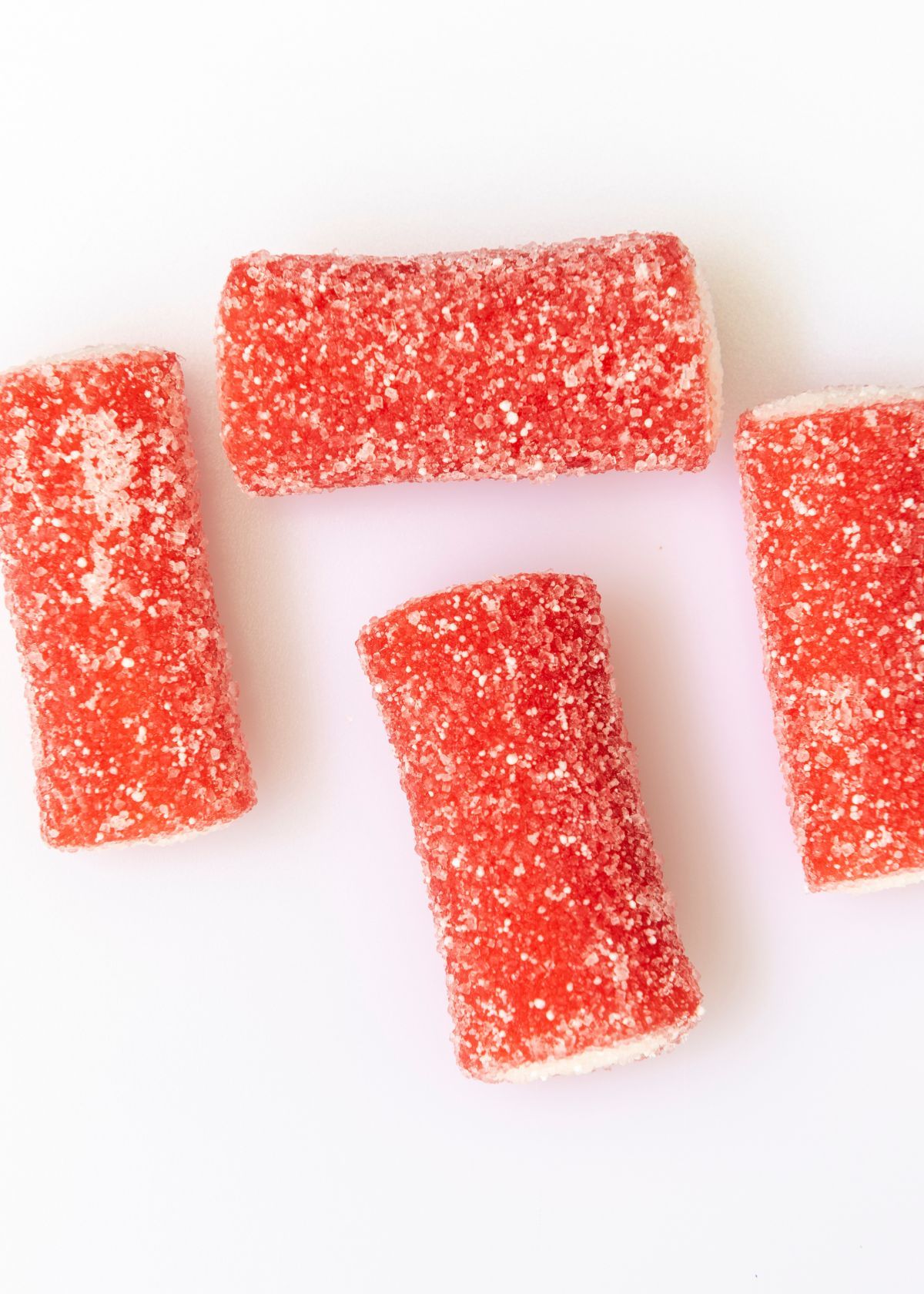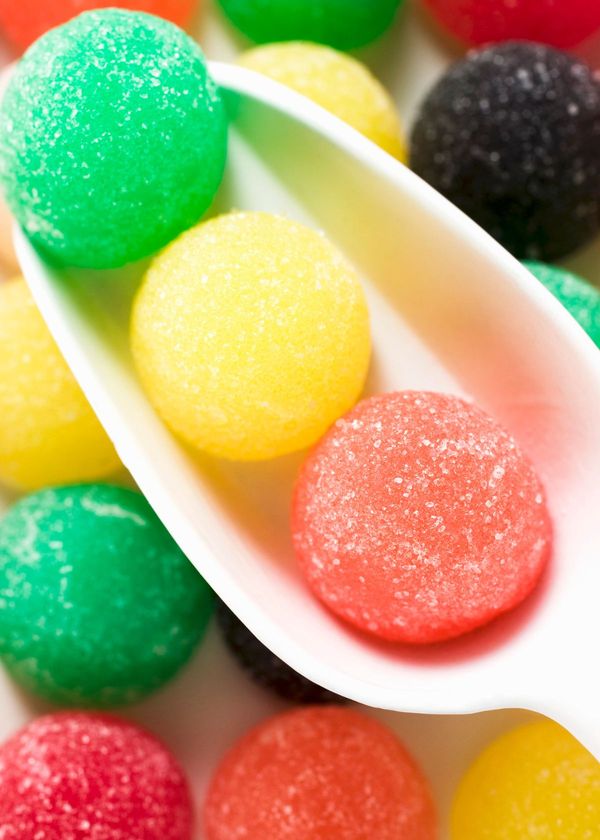What is the Protein in Gummy Bears? Exploring the Ingredients of Everyone's Favorite Sweet Treat
Gummy bears have been around since the 1920s and have become a worldwide phenomenon. These sweet, chewy candies come in natural flavors in a variety of flavors and colors and are a popular treat for people of all ages. They are prepared using silicone molds. So, how much a nutrient they contain?
But have you ever wondered what makes these gummy bears chewy and sweet? In this article, we will explore the protein ingredients in traditional gummy bears, and learn how they give these candies their distinct texture.

The Ingredients of Gummy Bears
Before we dive into the recipe for the protein ingredients of gummy bears, let's take a quick look at the sugar content of other ingredients that make up these delicious treats:
- Sugar: The main ingredient in gummy bears is sugar, which gives them their sweetness.
- Corn syrup: Corn syrup is added to the gummy mixture in order to make it more viscous and sticky.
- Gelatin: Gelatin is what gives gummy bears their distinct chewy texture. It is a protein derived from collagen and is typically made from animal bones and skin.
- Citric acid: Citric acid is added to gummy bears to give them a sour taste.
- Flavorings: Gummy bears come in a variety of flavors, including fruit flavors like cherry, lemon, and strawberry, as well as more exotic flavors like pineapple and mango.
The Protein in Gummy Bears
What is the protein in gummy bears? As mentioned earlier, the protein in gummy bears is gelatin. Gelatin is a protein derived from collagen, a structural protein found in the skin, bones, fat, and connective tissue of animals. When collagen is heated and broken down, it turns into gelatin.
Gelatin is a hydrophilic colloid, which means that it attracts and holds water molecules. This is what gives gummy bears their chewy texture. When the gummy bear mixture is heated, the gelatin molecules dissolve in the water and become evenly distributed throughout the mixture. As the whole of the protein gummy bears in the mixture cools and sets, the gelatin molecules form a network that traps the water molecules in place, giving the gummy bears their chewy texture.
In addition to giving gummy bears their texture, gelatin is also a good source of protein. One tablespoon of gelatin (general nutrition advice) contains roughly six calories and 6 grams of protein. This may not seem like a lot, but when you consider the handful typically consumes that gummy fruit juice bears, the protein and fiber content can quickly add up.
Other Uses of Gelatin
Gelatin is not just used in gummy bears – it has a variety of other uses as well. Here are only a few ingredients of the other ways that gelatin is used:
- Food production: Gelatin is used in a variety of foods besides gummy bears, such as marshmallows, yogurt, and ice cream.
- Medicinal uses: Gelatin is used in the production of capsules and is often used in medications to help with digestion and joint pain.
- Photography: Gelatin is commonly used to form photographic film, allowing it to hold the emulsion in place.
Vegan Alternatives to Gelatin
While gelatin is a popular ingredient in gummy bears, candy, and other foods, it is not a suitable option for vegans or vegetarians, as it is derived from animal products. Luckily, there are a number of alternative gelling agents that can be used in place of gelatin. Some of these alternatives include:
- Agar-agar: Agar-agar is a substance derived from seaweed and commonly used as a vegan alternative to gelatin. It is particularly popular in Asia and is used in a variety of desserts and other foods.
- Carrageenan: Carrageenan is another seaweed-based gelling agent that is commonly used in vegan desserts and other foods.
- Pectin: Pectin is a carbohydrate that is derived from fruits and vegetables, and is commonly used as a gelling agent in jams and jellies.
What is gummy formula?
Gummy formula is a type of natural food supplement derived from plant-based ingredients. It is usually made up of various proteins, carbohydrates, vitamins, malic acid, minerals, and other nutrients that are beneficial for the healthy function properly the human body.
Gummy formula has been used to treat a variety of medical conditions, including gastrointestinal issues, skin problems, and more. It can also be taken as a daily vitamin C supplement to maintain good health and increase overall energy levels.
In addition to serving its medicinal uses, the gummy formula is often used in protein bars and other snacks due to its pleasant taste and texture. Due to its active ingredient and iron content, it can help keep you full longer while providing essential nutrients at the same time.
What is the scientific method gummy bear experiment?
The scientific method gummy bear experiment is a fun way to introduce children to the basics of the scientific process. It involves students observing and measuring how gummy bears change when placed in different liquids over time. The goal is to observe how the gummy bear's size, shape, texture, and color change as it absorbs different liquids.
This experiment can help teach kids about observation skills, measurement techniques, data analysis, and hypothesis testing. With careful observation and measurements, this experiment can provide a great introduction for young learners to the world of science!
What is the chemistry of gummy bears?
Gummy bears are a type of confectionery made from sugar, corn syrup, gelatin or pectin, starch and various flavors and colors. The combination of these ingredients is what gives gummy bears their chewy texture, flavor and long shelf life.
The most important components in the chemistry of gummy bears are the gelatin or pectin combined with acid-sugar combinations to form a gel.
Another of the best nutrition facts is that gelatin is derived from animal collagen, which provides the firmness and elasticity of gummy candies, while pectin is more commonly used as an alternative for vegetarians as it is derived from fruit sources. Gummies also contain a mixture of acids such as citric acid, tartaric acid, or lactic acid, which give them their sour, tangy taste.
Corn syrup, fresh fruit, and sugar are also used to sweeten the gummies, while various colors and artificial flavors can be added for visual appeal. All these ingredients react with each other to create a unique chemical reaction that binds all of the components together.
Conclusion
Gummy bears are a beloved sweet treat that has been around for nearly a century. The protein that gives these candies their distinct chewy texture is gelatin, a protein that is derived from animal bones and skin. While not suitable for vegans or vegetarians, gelatin is a popular ingredient in a variety of foods and has a number of health benefits and other uses in nutrition, as well. Luckily, there are a number of vegan alternatives to gelatin, so everyone can enjoy the sweet, chewy goodness of gummy bears.










